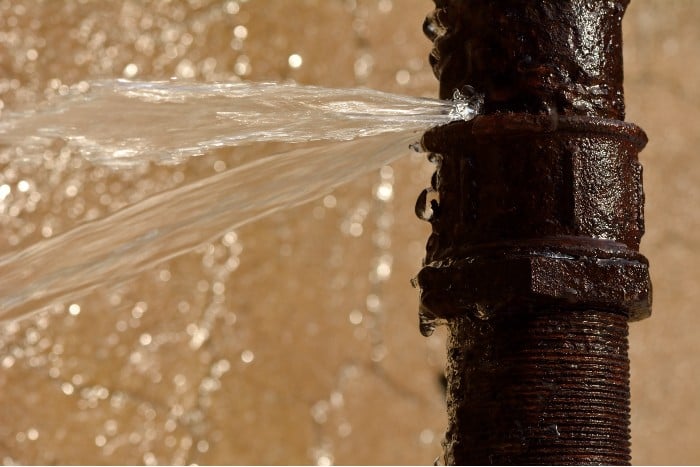Expose Typical Origins of Water Leaks Within Your Home
Expose Typical Origins of Water Leaks Within Your Home
Blog Article
Here down the page you can find some exceptional guidance in regards to Common Water Leaks In House.

Leakages not only cause waste of water however can also cause unneeded damages to your residence and advertise unwanted natural development. By looking and also comprehending for everyday circumstances that trigger leaks, you can safeguard your home from future leaks and unnecessary damage.
Instantaneous temperature changes.
Extreme temperature level adjustments in our pipelines can cause them to increase and also contract all of a sudden. This expansion and also contraction may cause cracks in the pipes, especially if the temperature are below cold.
Corroded water systems
As time passes by, your plumbing system ages and corrosion such as rust may start gnawing the pipelines. This might be the reason for staining or warping on your pipes. This requires an inspection with your plumber quickly. If our plumbing system is old, consider replacing the pipes considering that they are at a greater risk of rust than the more recent versions.
Defective Pipe Joints
The point at which your pipelines attach is regularly the weakest link in the waterline. Pipe joints can wear away in time, resulting in water leaks. However, the majority of pipe joints are not quickly visible. If you have noisy pipelines that make ticking or banging noises, specifically when the warm water is switched on, your pipe joints are most likely under a lot of pressure. It is advisable to have your plumber check your system annually.
Elbowing in roots
Many water leaks start outside your house as opposed to inside it. If you notice a sudden decline in water pressure, say in your tap, take some time to go out and analyze your yard. You might see wet spots or sinkholes in your backyard, and that might mean that tree origins are attacking water lines creating water to permeate out. You can have your plumber look for intrusion, especially if you have trees or bushes near your home.
Poor Water Connectors
At times, a leak can be caused by loosened hoses and also pipes that supply your devices. More often than not, moving is what causes the loosened water Links. You may locate in the case of a cleaning device, a tube might spring a leak as a result of trembling during the spin cycle. In case of a water connections leak, you might see water running directly from the supply line or puddles around your appliances.
Obstructed Drains
Blocked drains pipes could be annoying as well as inconveniencing, but they can in some cases wind up triggering an overflow leading to burst pipes. Keep getting rid of any materials that may decrease your drains that could clog them to prevent such aggravations.
All the above are sources of leakages yet not all water leakages arise from plumbing leaks; some leaks might come from roofing system leakages. All leaks should be fixed right away to stay clear of water damage.
Leakages not just create waste of water however can additionally cause unnecessary damages to your home and promote unwanted organic growth. By looking and also recognizing for day-to-day circumstances that trigger leakages, you can safeguard your house from future leaks as well as unnecessary damages. Today, we will certainly look at six leakage creates that might be creating your pipes to drip.
At times, a leak can be caused by loose hose pipes and also pipes that provide your devices. In situation of a water connections leak, you may observe water running directly from the supply line or pools around your appliances.
How To Check For Water Leak In Your Home
How To Check for Leaks
The average household's leaks can account for nearly 10,000 gallons of water wasted every year and ten percent of homes have leaks that waste 90 gallons or more per day. Common types of leaks found in the home are worn toilet flappers, dripping faucets, and other leaking valves. These types of leaks are often easy to fix, requiring only a few tools and hardware that can pay for themselves in water savings. Fixing easily corrected household water leaks can save homeowners about 10 percent on their water bills.
To check for leaks in your home, you first need to determine whether you're wasting water and then identify the source of the leak. Here are some tips for finding leaks:
Take a look at your water usage during a colder month, such as January or February. If a family of four exceeds 12,000 gallons per month, there are serious leaks.
Check your water meter before and after a two-hour period when no water is being used. If the meter changes at all, you probably have a leak.
Identify toilet leaks by placing a drop of food coloring in the toilet tank. If any color shows up in the bowl after 10 minutes, you have a leak. (Be sure to flush immediately after the experiment to avoid staining the tank.)
Examine faucet gaskets and pipe fittings for any water on the outside of the pipe to check for surface leaks.
Undetected water leaks can happen without the home or business owner even realizing. If you suspect a water leak, but not able to find the source. It is time to contact a professional water leak detection service, The Leak Doctor.
How To Find a Water Leak In Your Home
https://www.leakdoctor.com/blog/How-To-Check-For-Water-Leak-In-Your-Home_AE197.html

I recently found that entry on How Fast Water Damage Can Ruin Your Home while browsing the internet. Liked our piece of writing? Please share it. Help somebody else discover it. Thanks for going through it.
Get the right fix, call! Report this page